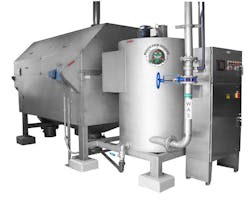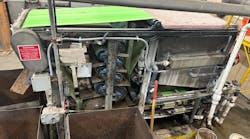Circa 2006
Durango, Colo., is a historic town in the Rocky Mountains whose heyday hinged on the silver mining boom in the late 1800s. Then, wild west outlaws were the threat to the town. Nowadays, the modern usurper is high energy costs. This report is about how a couple of deputy types down at the local wastewater treatment plant put a stop to a money grab.
The Problem
The Durango Wastewater Treatment Facility is a traditional waste-activated system. The biosolids (WAS) are collected from secondary clarifiers, treated with flocculants and thickened before anaerobic digestion. Centrifuges had been used for the thickening process, which took the WAS to a 12 to 15% consistency. The plant had three 50-hp units, one or two of which were operated under supervision from 8 a.m. to 4 p.m. each day. Typical energy draw was in the range of 75 kW, a big fraction of the plant power usage. Additionally, the centrifuges were requiring more maintenance than ever. The service costs, spare parts and downtime were taking a considerable portion of the maintenance budget.
The Solution
Plant engineers determined that the anaerobic digesters would not be adversely impacted if the biosolids feed was between 6 to 8% consistency. Some research was made to determine alternate equipment or processes. Also, a new set of chemical trials found flocculants with tighter solids formation. The Durango WWTP engineers decided on a rotary drum thickener to best meet their needs. Noteworthy, this equipment operates with only 1.5 hp, so the top priority challenge of lowering energy consumption also would be addressed.
Durango WWTP commissioned a JWC Environmental IFT 3648 Monster Drum Thickener in June of 2006. The base of the standard unit was modified to fit on the existing centrifuge pad that it replaced, minimizing installation cost.
The unit processes 80 gpm of 1% WAS, thickened between 6.5 to 7%. Polymer consumption costs are improved from that used on the centrifuge process. Energy consumption on the total thickening process dropped from 75 kW to 3 kW.
The epilogue is it will not take long for the WWTP to recover the expenditure on its new sludge thickening equipment. The WWTP foiled the little energy “heist.” The operators are happy that they no longer have to fuss with the old, high-maintenance equipment. Like a little mountain pack horse, the JWC Monster Drum Thickener is pulling more than its share and without much bother to anyone. In addition, it is tough enough to survive in this little town for a good long spell.



